Drinking coffee with the Emperor? Twice a year the Imperial Palace is open to the public: on 2 January and on the Emperor’s birthday. But since 30 April 2019, the Emperor’s birthday has changed. The reason is simple. Emperor Akihito resigned and made way for his oldest son Naruhito. Can we drink coffee on February 23rd?
No, not at all. Only the gates are open, not the palace itself. If you’re not in Tokyo these days, don’t worry! There is plenty to see to get a good impression of the former Edo Castle and the current Imperial Palace. All you have to do is follow my route! But first a bit of history…
In this article about the Imperial Palace
Useful Websites Tokyo & Japan
- Accommodation Tokyo: Agoda, Booking
- Tours & Tickets: Getyourguide Walking tour Imperial Palace + Guide
- Flight Tickets Japan: Jetradar
- Train Tickets: Japan Railway Pass
- Rental Car: Rental Cars
This page about the Imperial Palace contains affiliate links. This means that if you make a booking through one of the links on this website, Travel4history receives a small compensation. This is at no extra cost to you!
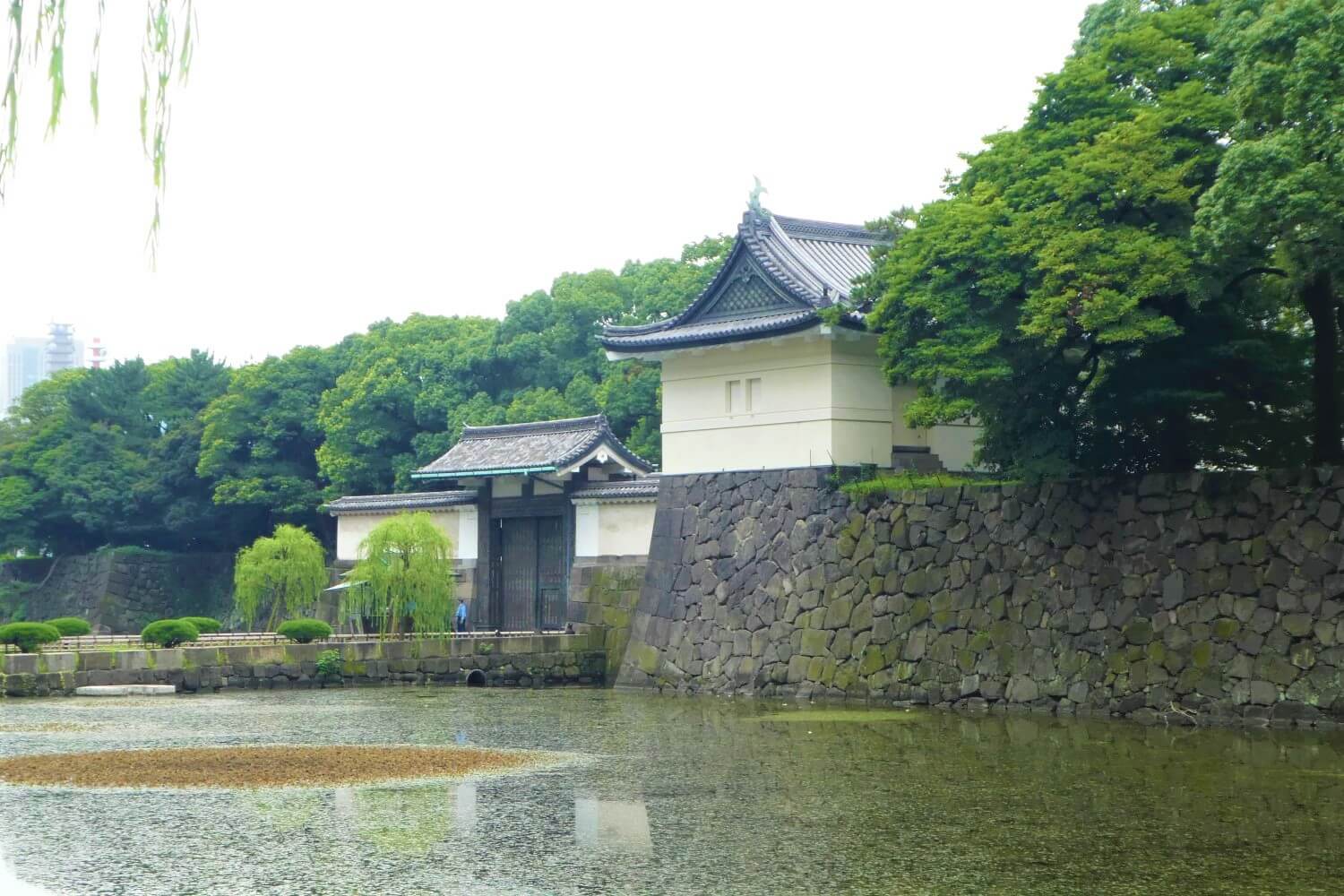
Edo Castle: the largest castle of Japan
Ota Dokan (1432-1486) built a small fort in 1457 on the present site of the Imperial Palace. Therefore he is considered to be one of the founding founders of Tokyo. However, Edo remained an unimportant fishing village until the Tokugawa family gained power at the end of the 16th century.
Ieyasu Tokugawa gave the order to increase the fortress into a large castle. Landlords in Japan were obliged to supply materials and people for its construction. Soon Edo had more than 150,000 inhabitants. By 1650, the castle had a total of 36 gateways and could accommodate 50,000 warriors. This place has been the center of power in Japan for more than 400 years now.
Fact: In 1657 a big fire took place (Great fire of Meireki). 60% of the city burned down and more than 100,000 inhabitants died. The Edo Castle also had to endure a lot. It took two years to rebuild everything.
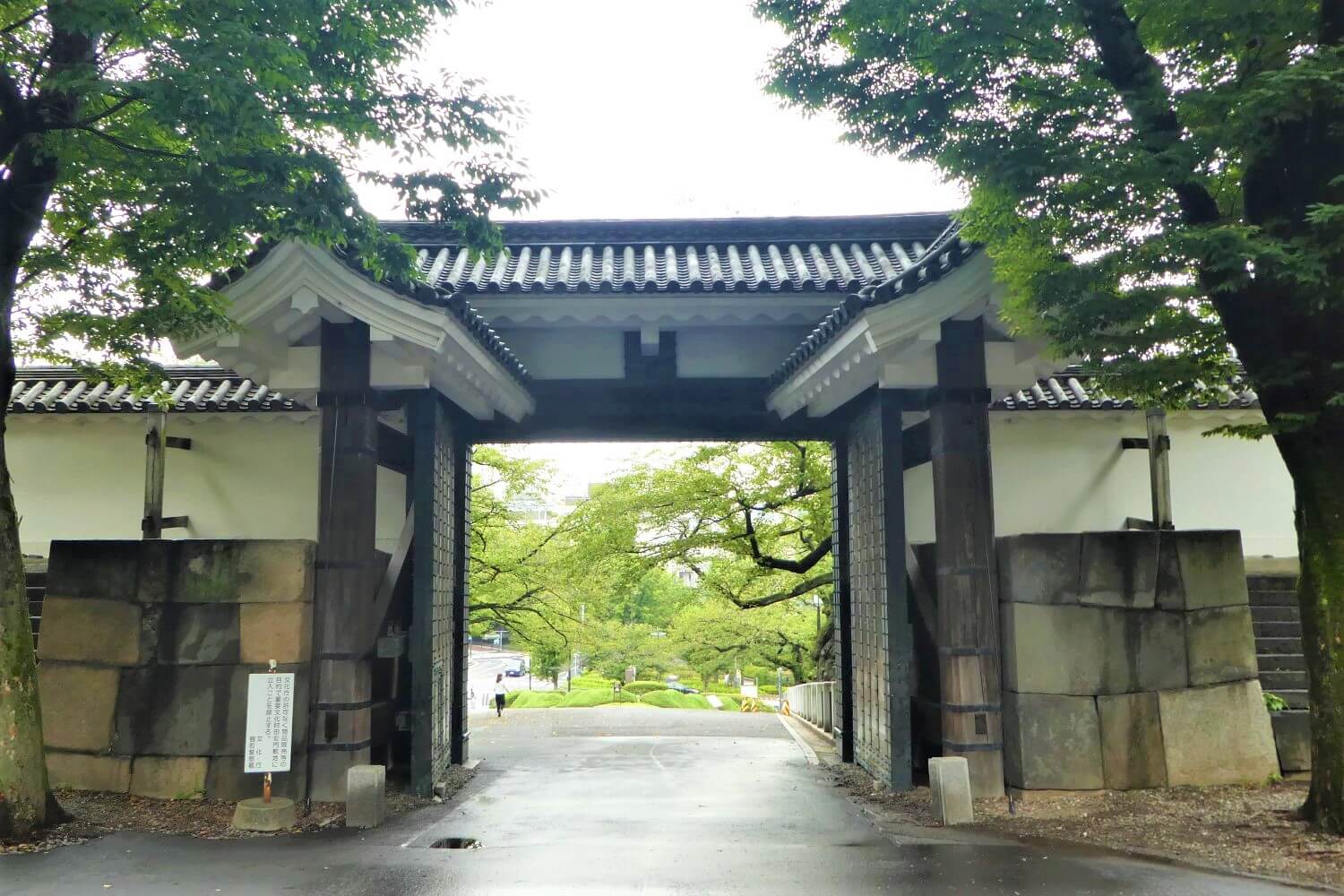
Kitanomaru park, the former gardens
I start my visit to the former site of the Edo Castle in the north. Since 1969 the Kitanomaru park has been a public park. But at the time of the Tokugawa era, family members lived here and gardens with medicinal plants had been laid out.
I enter through the original Tayassu gate built-in 1635. This now belongs to an important part of the city’s cultural heritage. As I walk further I come across another piece of heritage: the Nippon Budokan. Well, it’s not that historic. Judo competitions were held during the 1964 Olympic Games. The Beatles also gave a concert here in 1966. It still functions as a concert hall today.
A walk through the Kitonomaru park takes you along several small waterfalls, a lake, and beautiful Japanese trees. For a moment of peace and tranquillity, this is the place to be!
Tip: If you have time to spare, visit the Sannomaru Museum of the Imperial Collections. It is located in the eastern palace gardens, but is closed on Mondays and Fridays.
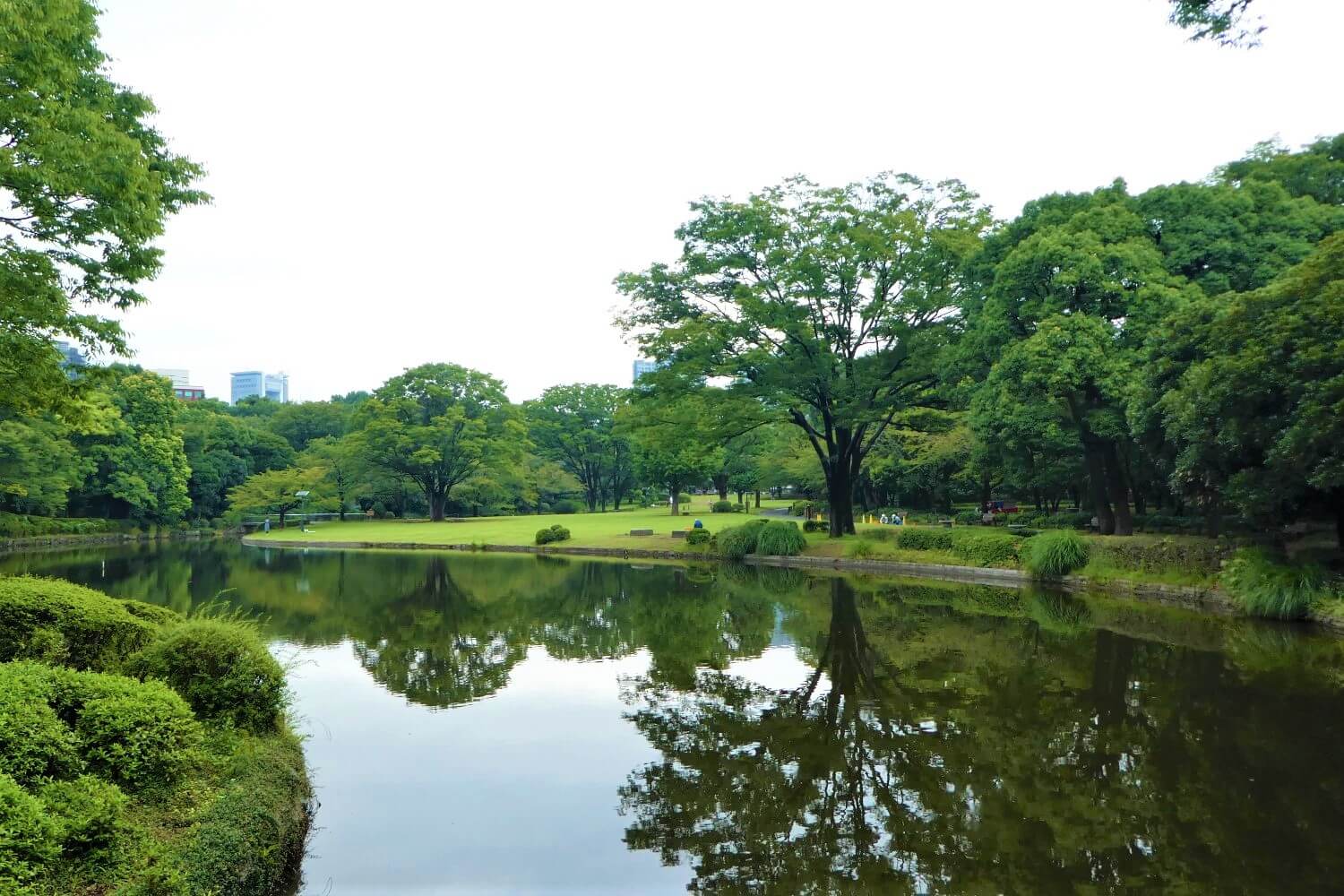
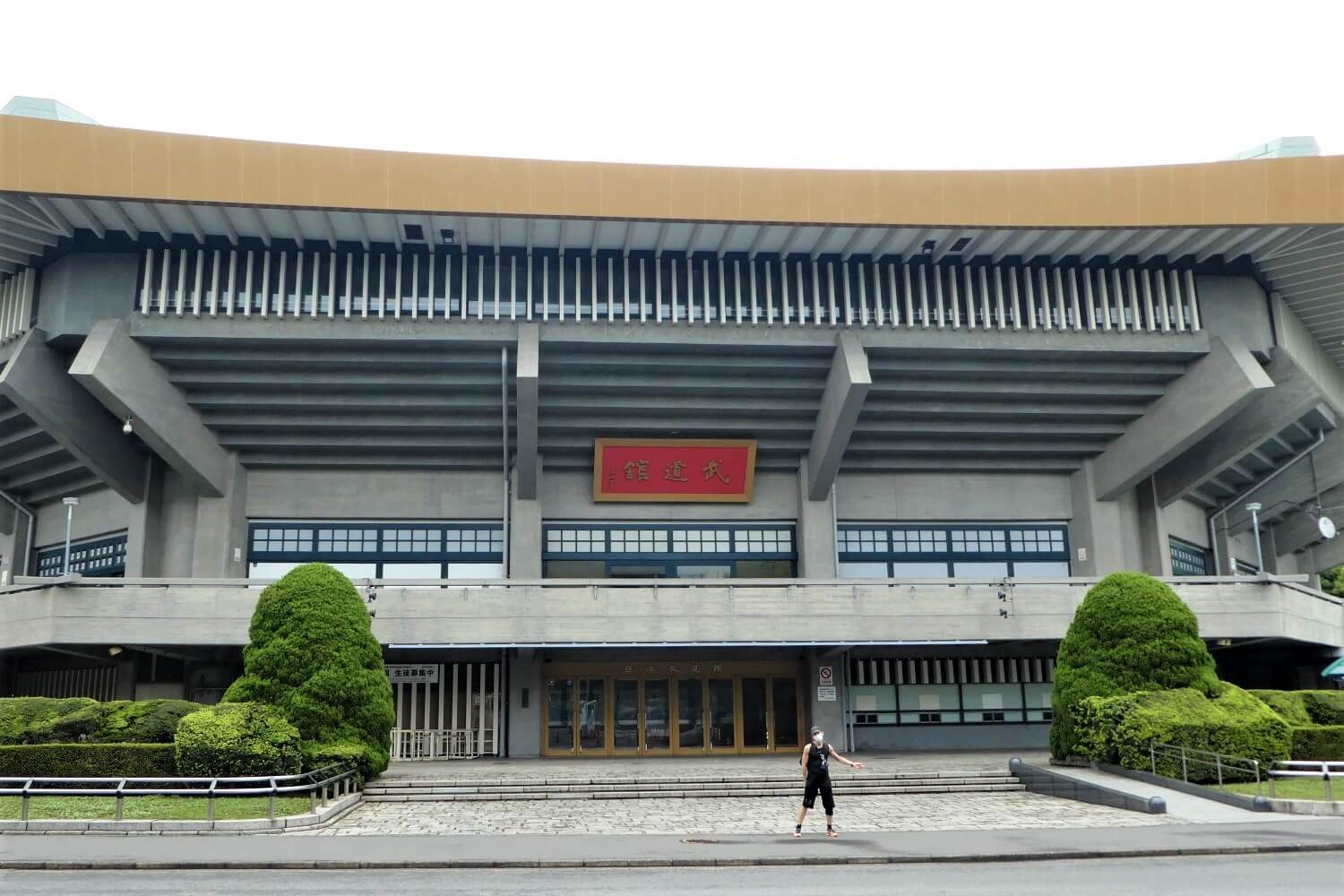
The Imperial Palace East Gardens
From the Kitanomaru park, it is possible to reach the palace gardens via the northern gate. Unfortunately, these gardens are not open every day of the week. And you may guess: it’s closed. So let’s take a tour along the canal and the wall. Most of this outer wall dates back to the 17th century.
But if you can enter the Imperial Palace East gardens: in this area, you will find a few remnants of what used to be the Edo Castle. On this part of the area stood the barracks for the samurai, the armed troops of the Tokugawa family. There is also a foundation of a tower from 1657. The park, called Kokyo Higashi Gyoen, became public in 1968.
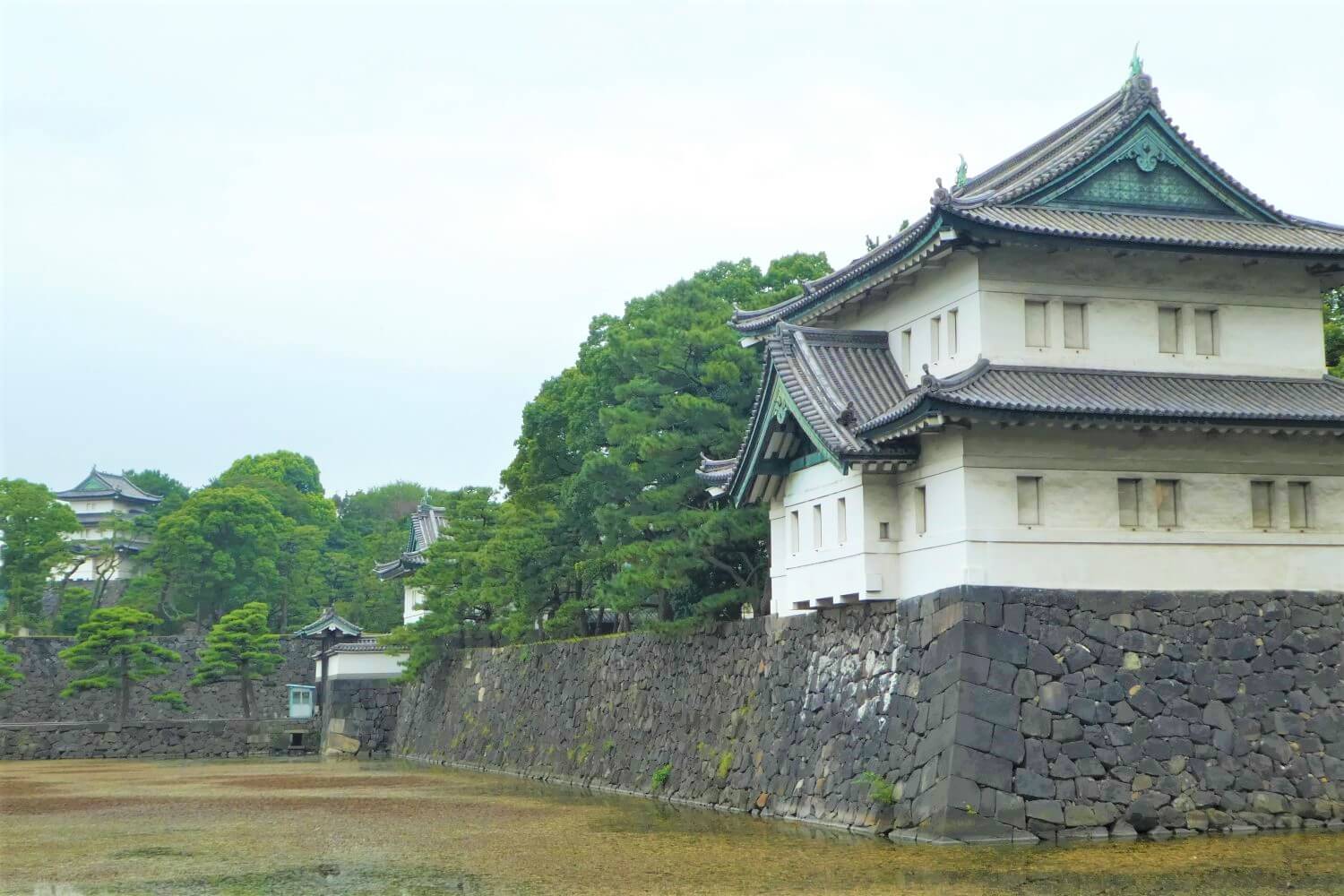
From Edo Castle to Imperial Palace
In 1868 Emperor Meiji (1852-1912) gained power and moved from Kyoto to Tokyo. The former Edo castle became his home. But parts of the original castle were destroyed by a fire on 5 May 1873. In the following years, new construction was built and in 1888 the emperor was able to move in.
But during the bombing of the Second World War things went wrong again. The Imperial Palace was largely destroyed but fortunately rebuilt. Then the palace got its current name: Kokyo. Emperor Naruhito has lived here since 30 April 2019.
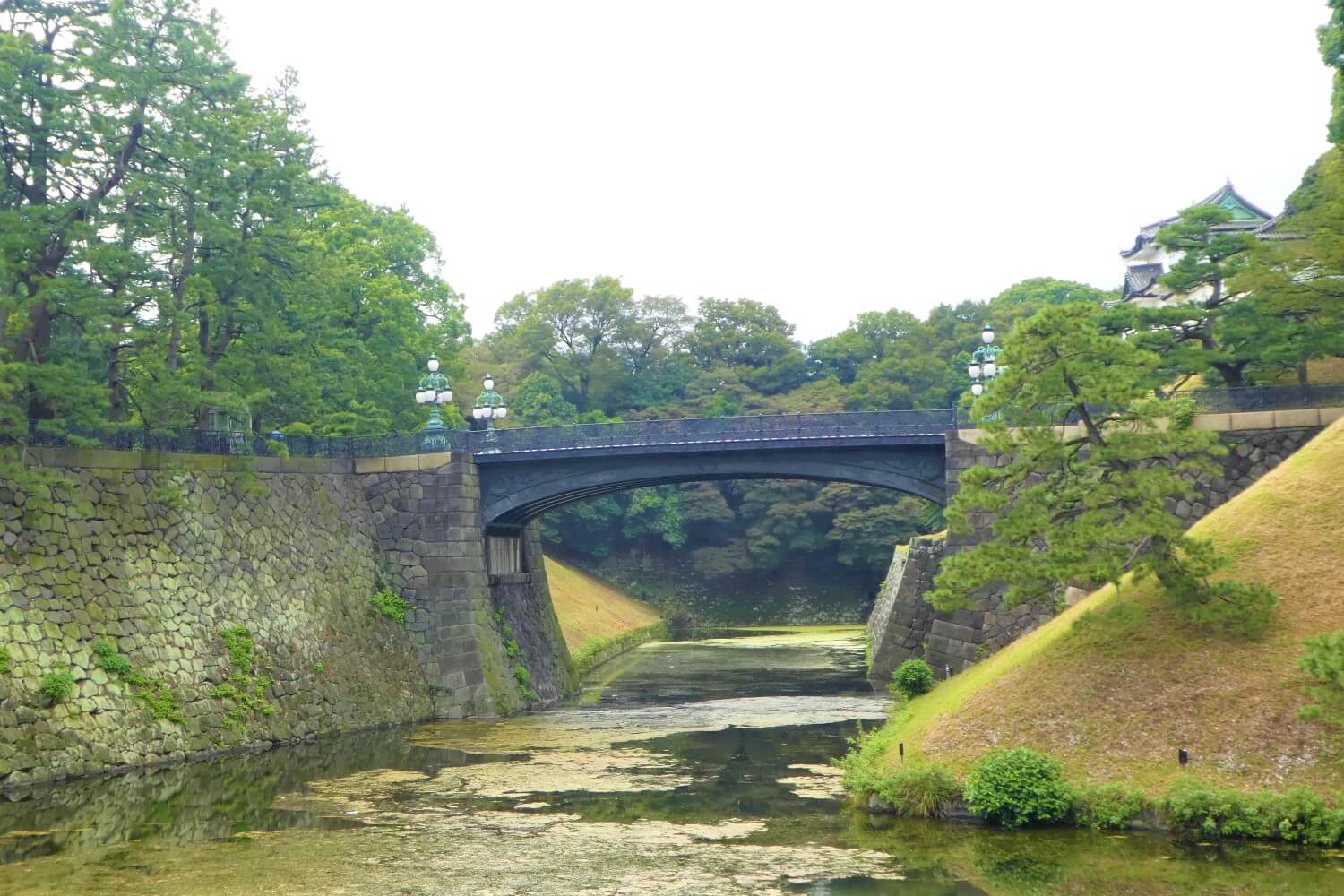
The most photographed bridge of Tokyo
I’ll continue my route to the south. Along the canal, there are several castle towers and entrance gates. But the most special sight is the Nijubashi bridge. Nijubashi literally means ‘two bridges’. However, the correct name for this bridge is Seimon Ishibashi. If you are in Tokyo a picture of this bridge can’t be missed. Of course, I also took a picture.
The bridge is the gateway to the complex, but if you look closely you see a metal bridge behind it that leads to the palace. Officially this was called the Nijubashi. It used to be made of wood and consisted of two bridges. For 50 years it has been a metal bridge. But I can’t get there. Fortunately, we still have the pictures…
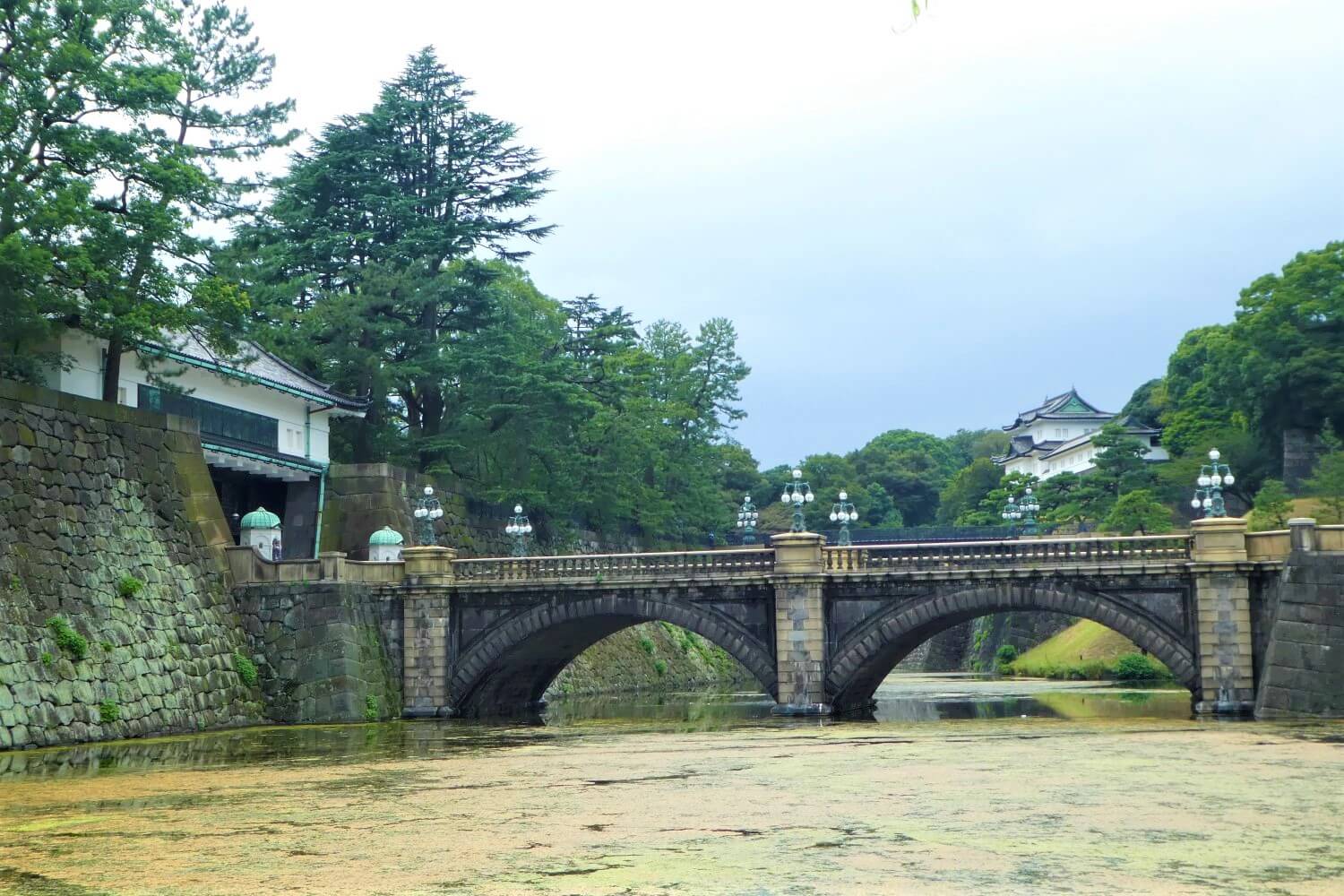
Practical Information about the former Edo Castle in Tokyo?
How to get to the Imperial Palace?
The Imperial Palace and its gardens are located in the Chiyoda district. To get to the Nijubashi bridge take the Chiyodalijn, get off at stop Nijubashi. For the Eastern garden of the Imperial Palace get off at Otemachi (5 lines), the largest metro station in Tokyo. For the northern Kitanomarupark, where I started, get off at Kudanshita Station (3 lines).
Opening hours?
The gardens are closed on Mondays and Fridays! On other days it is free to visit.
It also seems possible to make a tour over a part of the complex. For more information visit the website of the Imperial Household Agency. A tour will take 75 minutes and will bring you close to the private area of the Emperor. But I doubt if you can drink a coffee with him…
Maybe also interesting?
- The 15 historical attractions of Tokyo
- Meiji Jingu Shrine | Visit the Shrine of Emperor Meiji
- Sensoji Temple | 5 historical facts you should know
- Hachiko | Meet the world’s cutest dog
- Zojoji Temple | Is this the most important shrine in Tokyo?
Do you have more tips, ideas, or comments about the Imperial Palace in Chiyoda, Tokyo? Then feel free to leave a message below.